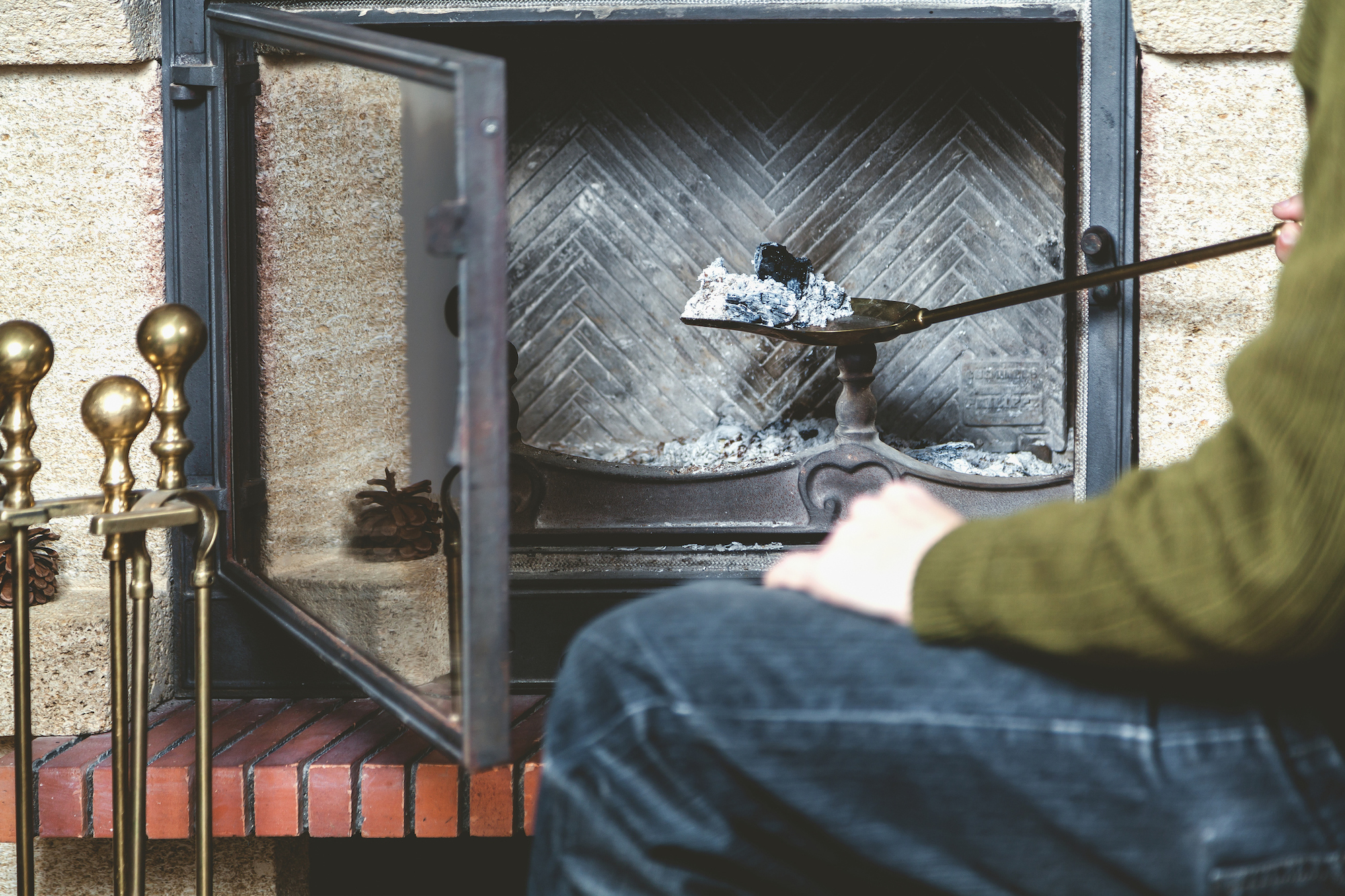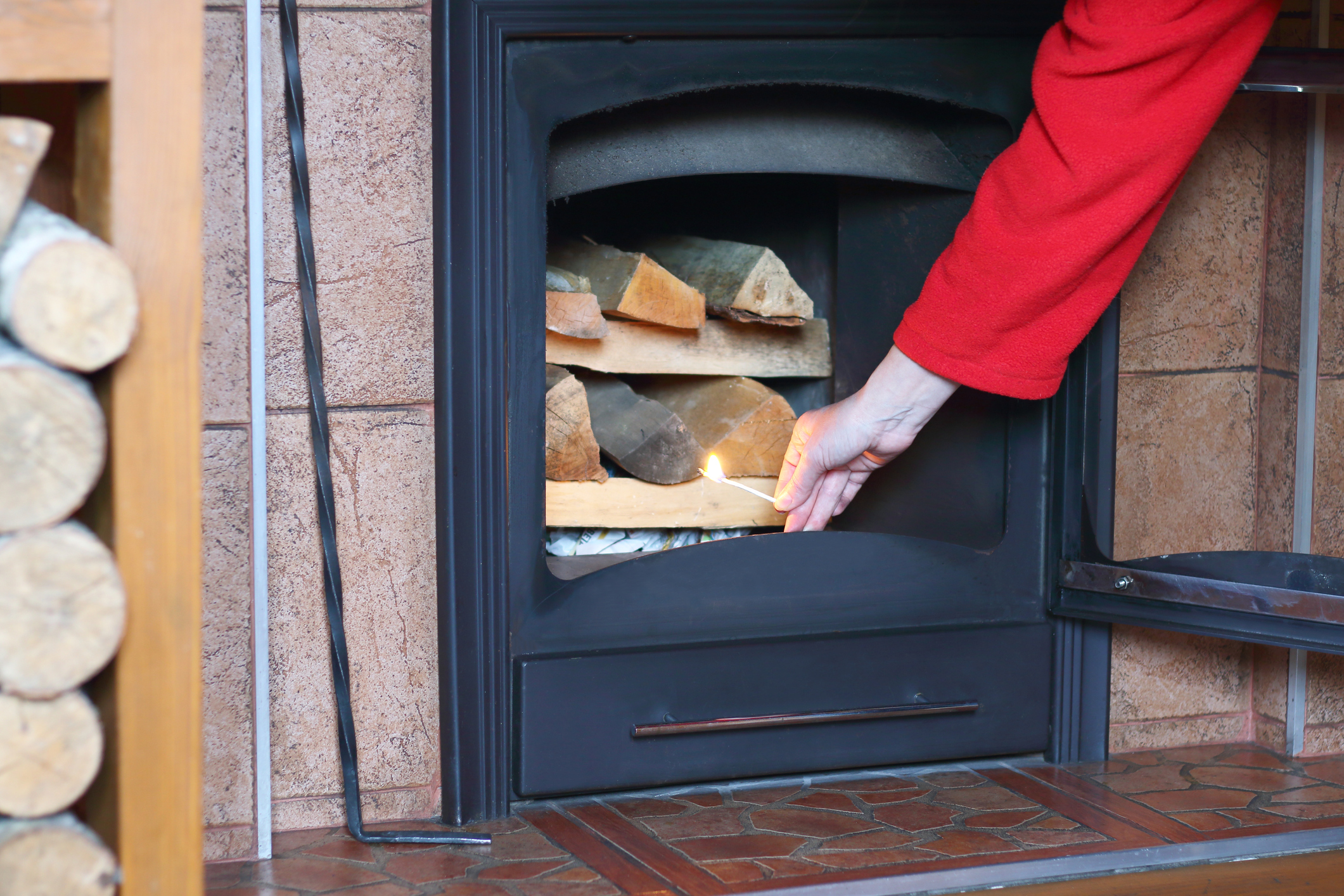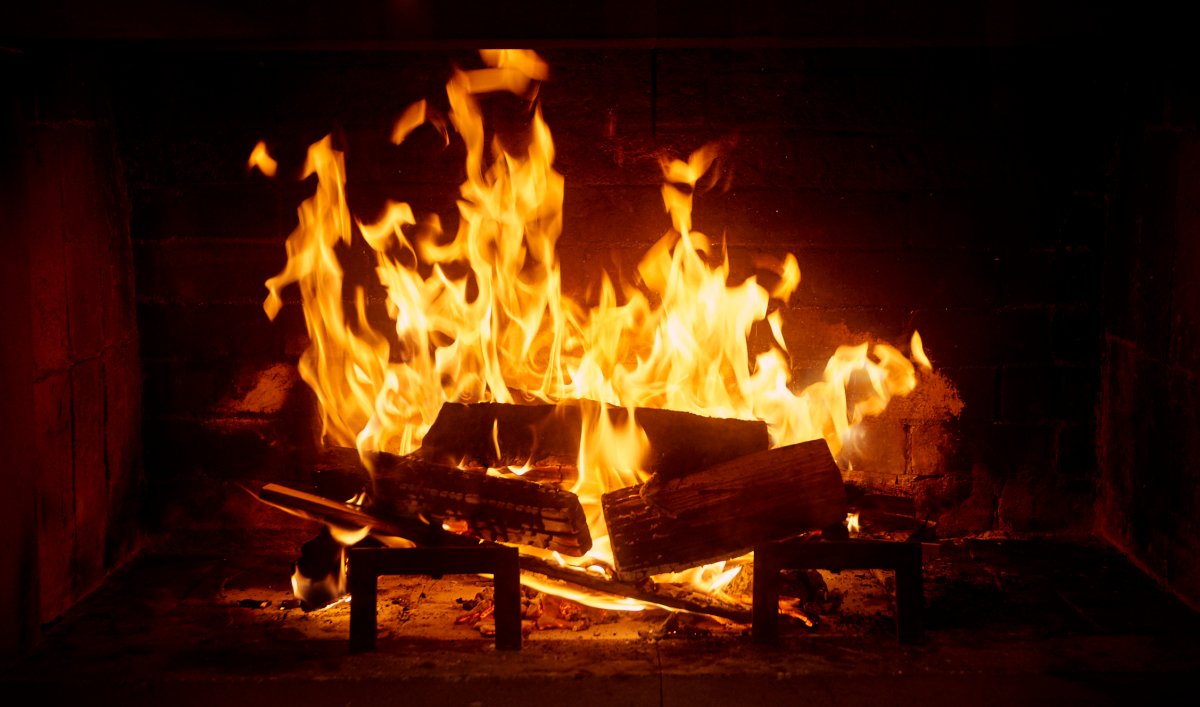We may earn revenue from the products available on this page and participate in affiliate programs. Learn More ›
At first, it may seem like a foolproof undertaking: You put some wood in the fireplace, light a match, then sit back and watch it burn. Right? Well, yes and no. With seasoned firewood, a box of matches, and a handful of kindling, you can go a long way on trial and error alone. But if you build fires often and have grown tired of returning to constantly poke at the logs—or if you care about how much heat the fire actually gives off—then it’s a tremendous help to master the best way to start a fire in the fireplace.
Fireplace Safety and Maintenance
Before any plans are made to gather ‘round the fire for a blissful evening of coziness, homeowners should ensure their fireplace is prepared to safely host the flames. Make a concerted effort to remember to execute some basic safety measures on an annual basis, or more often if the fireplace is used frequently.
Cleaning is especially important: Keep ashes at a minimum with regular ash disposal throughout the cold season, and ensure the chimney is free of buildup and birds’ nests with by booking an annual inspection.

When it’s time to go to bed get in the habit of putting out your fire, rather than just letting it die on its own. Start by spreading out all the embers then, using your fireplace tools, coat the embers in ash. Apply a thin layer of baking soda over the ash and embers and wait until the embers cool. If you want to go the extra mile, scoop the ashes and dead embers into a fire-safe container and take the container outside before you go to bed.
- Be sure your chimney has been inspected and cleaned by a professional. Over time, creosote builds up in the flue, making it vulnerable to chimney fires.
- Before bringing a flame into the equation, remember to open the damper so that smoke from the fireplace doesn’t overwhelm your living room.
- If your fireplace does not have a fireplace grate, add one for safety and to encourage the airflow needed to sustain combustion.
Once you’ve prepared the hearth and chimney, proceed with one of these two methods for how to make a fire in a fireplace. With the proper execution of either strategy, you should end up with a fire that not only generates a comfortable amount of heat but also burns well on its own.
How to Start a Fire: The Log Cabin Method
One of the most commonly used methods of building a fire in a fireplace, the log cabin method builds a neat and well-balanced fire that requires minimal tending as the evening wears on. It’s about as easy as pulling out your Lincoln Log-building skills from back in the day: Simply build a “structure” using perpendicularly placed pieces of firewood. Light some kindling placed in the middle, and you’ll have a warm and cozy fire!
STEP 1: Place two thin logs with no bark parallel to the back of the fireplace about 6 inches apart from one another.
STEP 2: Heap kindling—whether newspapers, twigs, or both—between the two logs set up in the previous step.
STEP 3: Position two additional logs perpendicular to the first two. You should end up with a primitive log cabin-type structure that is two logs tall.
STEP 4: If you choose, add one more layer, with the logs running in the same direction as the first pair. The stack should take up no more than half the height of your fireplace.
STEP 5: Finally, light the kindling in the fireplace.
A Variation on the Log Cabin Method
In 1978, Mother Earth News reported on a variation of the “log cabin method,” tweaked to achieve maximum heat production.
STEP 1: Start by laying kindling in the middle.
STEP 2: Next, run two pieces of wood parallel to the sides of the firebox. The far tips of both logs should actually touch the rear of the firebox.
STEP 3: Now, as in the traditional log cabin method, lay two additional logs perpendicular to the existing two. Importantly, the rear perpendicular log should be touching the back of the fireplace. The other perpendicular log should be very close (not 6 inches away, as in the first log cabin version).
STEP 4: Finally, light the kindling and enjoy a better blast of warmth from your winter blaze.

How to Start a Fire: The Top-Down Method
With the kindling placed on top of the pile of wood, rather than at the bottom, the “top-down” method may seem a little strange, but it works. As it burns, the smaller wood at the top drops embers down into the pile of larger logs and ignites them.
This method of fire construction results in less smoke. With the hotter flames at the top, near the flue, the flue heats up faster, drawing more smoke from your fire more quickly.
STEP 1: Group the wood by relative size: large, medium, and small.
STEP 2: Line up your largest logs across the fireplace grate.
STEP 3: Lay a row of smaller logs across the logs that you arranged in the previous step. (These should be set perpendicular to the layer beneath.)
STEP 4: Add one more layer comprising smaller logs than the last, again running the opposite direction of the layer directly below.
STEP 5: Use your kindling to form the final, top layer. Make sure the stack takes up no more than half the height of your fireplace.
STEP 6: Light the fire from the top, and enjoy fuss-free flames all night.
As the smaller wood on top starts to burn, hot embers will drop down, gradually igniting the larger logs below.
The Best and Worst Fuels for Your Fire
The best fuel for your fireplace is well-seasoned hardwood, such as oak or birch. Hardwood will burn longer and produce less smoke than softwoods from conifer trees such as pine, fir, or spruce. You’ll be disappointed if you try to burn green or wet, unseasoned wood. A whole lot of nothing but smoke and lack of flame will be your reward in that case.
You also want to avoid using charcoal in your fireplace, and don’t be tempted to get things rockin’ with gasoline or lighter fluid: The fumes will be awful! Paper just creates a lot of ash and floaty fire hazards (outside the fireplace) so stay away from it, too.
Made of compressed sawdust, recycled materials like ground nutshells, and vegetable and plant wax, commercial fire logs are safe to burn in your fireplace.

Final Thoughts
The top-down method for starting a fire is typically thought to be superior to the log cabin approach. This is because the pyramid-shaped arrangement creates a stronger draft, which feeds oxygen to the fire and allows it to burn strong for a longer period of time. Plus, the consensus seems to be that the top-down method produces more heat than the log cabin method does. The Chimney Safety Institute of America also recommends the top-down method because it prepares the largest pieces of wood (at the bottom of the pile) for burning, ultimately creating a cleaner burn and less smoke than a log cabin–style fire that’s lit from the bottom.
In the end, the best way to build a fire in your fireplace will be the one that works best for you. Why not try both methods and decide for yourself which you like better?
FAQs About How to Build a Fire in a Fireplace
Ready to fill your home with a warm glow, but have just a few more questions about how to make a fire in a fireplace? Read on to further your education about how to get a roaring fire going on your hearth.
Q. Why can’t I start a fire in my fireplace?
If you can’t start a fire in your fireplace, first check to see that the chimney damper is open. If it is open, consider the last time you had your chimney professionally cleaned. If it’s been a while, the flue could be clogged up. Another possible culprit is inadequately seasoned wood.
Q. Why won’t my wood burn in the fireplace?
”Green” or unseasoned wood is often the culprit in this situation. Wood needs time to dry out before it will burn well.
Q. How do you know if your fireplace damper is open or closed?
Before starting a fire, you can simply reach your hand up into the flue a bit. If you feel a rush of air, your damper is open. You can also stick your head into the fireplace, look up, and look for daylight.
Q. When should I close the damper on my fireplace?
Wait until all the embers in your fire are extinguished, and then close the damper. Keep it closed when the fireplace is not in use.



